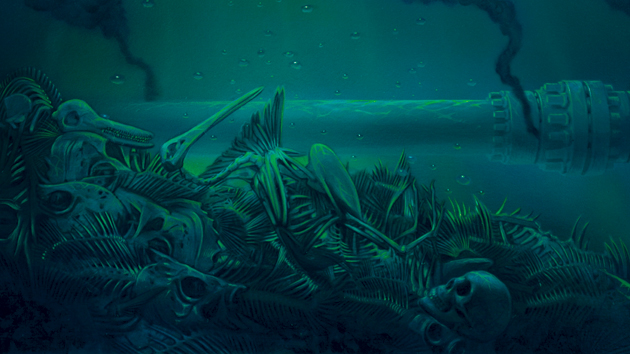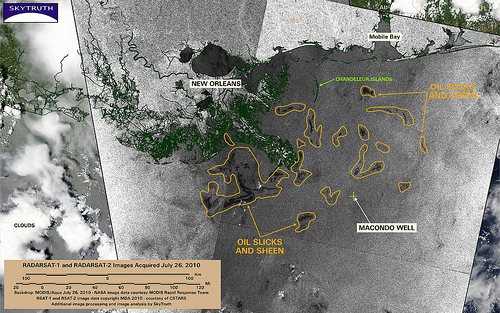Speaking of the BP cover-up, there are two very important pieces of news today about the extent to which the real impacts of the disaster have been hidden. In the St. Petersburg Times, Craig Pittman has this scathing report on how the National Oceanic and Atmospheric Administration attempted to silence scientists who discovered the vast undersea plumes of dispersed oil in the Gulf:
A month after the Deepwater Horizon disaster began, scientists from the University of South Florida made a startling announcement. They had found signs that the oil spewing from the well had formed a 6-mile-wide plume snaking along in the deepest recesses of the gulf.
The reaction that USF announcement received from the Coast Guard and the National Oceanic and Atmospheric Administration, the federal agencies that sponsored their research: Shut up.
“I got lambasted by the Coast Guard and NOAA when we said there was undersea oil,” USF marine sciences dean William Hogarth said. Some officials even told him to retract USF’s public announcement, he said, comparing it to being “beat up” by federal officials.
It gets worse; NOAA’s top brass confirmed that they tried to keep the reports quiet:
NOAA Administrator Jane Lubchenco, in comments she made to reporters in May, expressed strong skepticism about the existence of undersea oil plumes – as did BP’s then-CEO, Tony Hayward.
“She basically called us inept idiots,” Asper said. “We took that very personally.”
Lubchenco confirmed Monday that her agency told USF and other academic institutions involved in the study of undersea plumes that they should hold off talking so openly about it. “What we asked for, was for people to stop speculating before they had a chance to analyze what they were finding,” Lubchenco said. “We think that’s in everybody’s interest. … We just wanted to try to make sure that we knew something before we speculated about it.”
There’s another extremely important piece out today, wherein the Associated Press documents how oil is already finding its way into the food web. Scientists are finding traces of oil in crab larvae:
The government said last week that three-quarters of the spilled oil has been removed or naturally dissipated from the water. But the crab larvae discovery was an ominous sign that crude had already infiltrated the Gulf’s vast food web — and could affect it for years to come.
“It would suggest the oil has reached a position where it can start moving up the food chain instead of just hanging in the water,” said Bob Thomas, a biologist at Loyola University in New Orleans. “Something likely will eat those oiled larvae … and then that animal will be eaten by something bigger and so on.”
This, of course, does not help efforts to convince the public that seafood from the region is safe. Nor does it help in promoting the idea that the oil is less of a threat because we can’t see it, as the government and BP have been busy doing for the past week.













